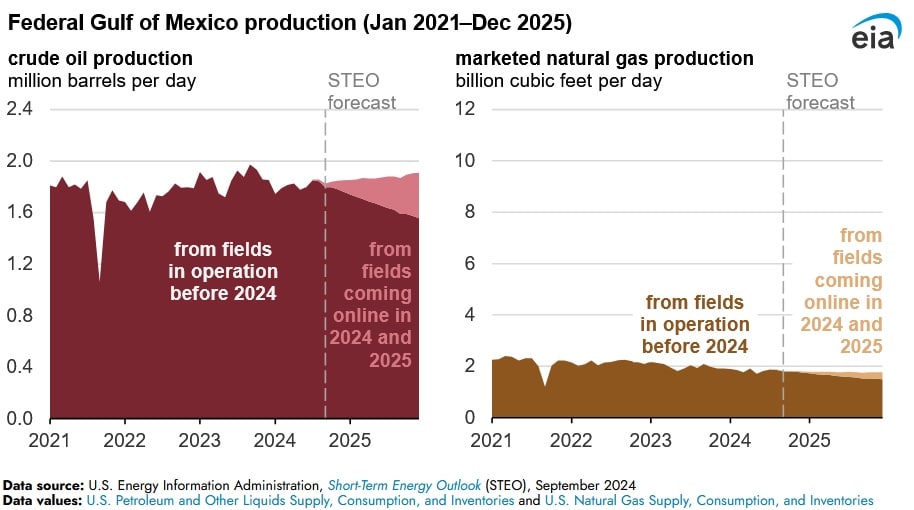New Fields in Gulf of Mexico Expected to Start Production During 2024 and 2025: EIA

Twelve new fields are expected to start production in the U.S. Federal Offshore Gulf of Mexico (GOM) during 2024 and 2025, according to an Sept. 16 report published by the U.S. Energy Information Administration. In the absence of production from these new fields, the agency would expect GOM production to decline. Crude oil and natural gas production from the region is expected to remain relatively flat during 2024 and 2025, with production from the new fields offsetting the production reduction from existing fields.
The department forecast crude oil production in the GOM to be 1.8 million barrels per day (b/d) during 2024 and 1.9 million b/d during 2025, in comparison to 1.9 million b/d during 2023. Moreover, the department projects natural gas production in the region to average 1.8 billion cubic feet per day (Bcf/d) during 2024 as well as 2025, compared to 2 Bcf/d in 2023. Based on these forecasts, the GOM is projected to account for around 14 percent of total U.S. oil production and two percent of U.S. marketed natural gas production. The Federal Offshore portion of the GOM accounts for about 97 percent of all U.S. Outer Continental Shelf production, as some production in the GOM falls within state maritime boundaries.
Seven of the 12 new fields will be established using underwater extensions from current Floating Production Units, or FPUs, at the surface. Four new FPUs are expected to produce natural gas and crude oil from five more fields. Technological developments in high-pressure and high-temperature drilling and production equipment and the succeeding Bureau of Safety and Environmental Enforcement guidance and regulatory approval permitted the production of deepwater resources starting in 2019.
New fields that are already operational during 2024 will contribute 22,000 b/d of crude oil production this year, and fields that will commence later in 2024 or 2025 will contribute on average 231,000 b/d, as additional production comes into service and increases.
EnerKnol Pulses like this one are powered by the EnerKnol Platform—the first comprehensive database for real-time energy policy tracking. Sign up for a free trial below for access to key regulatory data and deep industry insights across the energy spectrum.
ACCESS FREE TRIAL